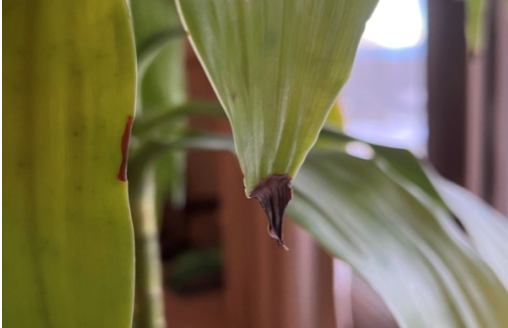Trusty houseplants purify the air we breathe
By Ann Larson
Oklahoma County Extension Master Gardener
Winter is upon us and our gardens don’t need us. It is the worst kind of withdrawal for a gardener.
But for many of us, when we’re stuck inside our stuffy houses, we turn to our houseplants for solace. Those trusty stalwarts sit quietly in corners or on tabletops or windowsills throughout the year, minding their own business, greening up our everyday environments and asking very little from us in return.
I tend to take them for granted: my never-fail spider plant, a mainstay since college days where it first found a home in a macramé hanger. My Mother-in-law’s tongue (Snake plant) grows taller and more sensational with each passing season, while my split leaf philodendron, sitting nearby, adds a different kind of drama. On a counter, a Peace lily, whose dark green leaves occasionally give way to creamy white spoon-shaped flowers, is a stark contrast to the Areca Palm that flourishes near a window. And the ever-ready aloe is a windowsill staple, while Golden pothos (Devil’s ivy) threatens to take over, winding over and around pots and filling oblong planters.
I can tend to these dependable “insiders” when my garden fingers get “itchy,” but I can also ignore them when the holiday frenzy sets in. But alas, I have discovered these steadfast plants are not just a pretty way to green up the indoors. These faithful friends not only bring beauty and joy into our homes, but they are making our sealed-up house healthy.
Our love of energy efficiency is not so great for the air we breathe, as it turns out. The natural air exchange that used to take place in drafty old homes of yesteryear has been virtually eliminated. All those remedies to reduce drafts and save energy are trapping air pollutants inside. Things like formaldehyde, benzene and other gasses are released from household products like carpet, some paints and varnishes, laminates, furniture, paper products, permanent press fabrics. They pollute the air we breathe.
But now NASA scientists have discovered that our tried-and-true houseplants can absorb these unwanted gasses, thus improving our home’s air quality.
NASA spearheaded research in order to find ways to clean up the air in space stations to make them suitable for human habitation for long periods of time. In doing so, they studied 19 different plant species for two years. Most were common houseplants whose leaf composition allows them to absorb carbon dioxide and give off oxygen, or photosynthesize, in low-light conditions.
As it turns out, some of the most effective at cleaning up the air are the very ones in my own home. I am breathing easier now. But there are many other houseplants that help improve air quality as well, plants I may soon be adding to my arsenal, such as: English ivy (which according to the American College of Allergy, Asthma & Immunology, can remove up to 78 percent of airborne mold in just 12 hours), Weeping fig, Dracaena, Boston fern (one of the best for removing formaldehyde); Chinese evergreen and Rubber plant.
For more information on the study or specific plants investigated and the results, go to ntrs.nasa.gov/archive/nasa/casi.ntrs.nasa.gov/19930073077.pdf.
